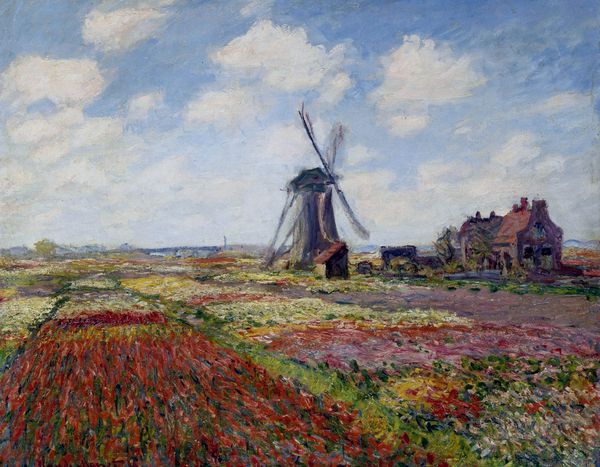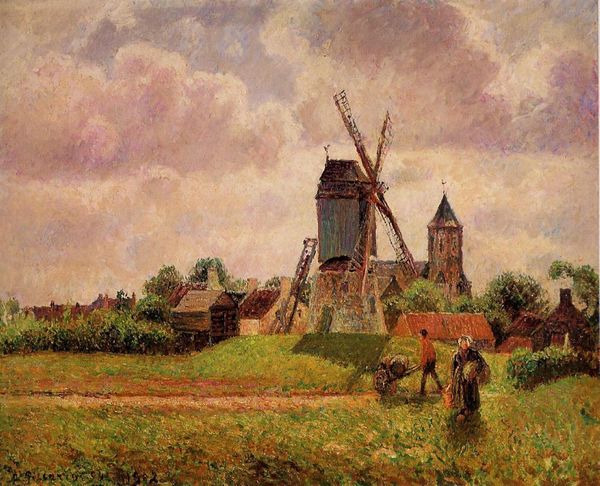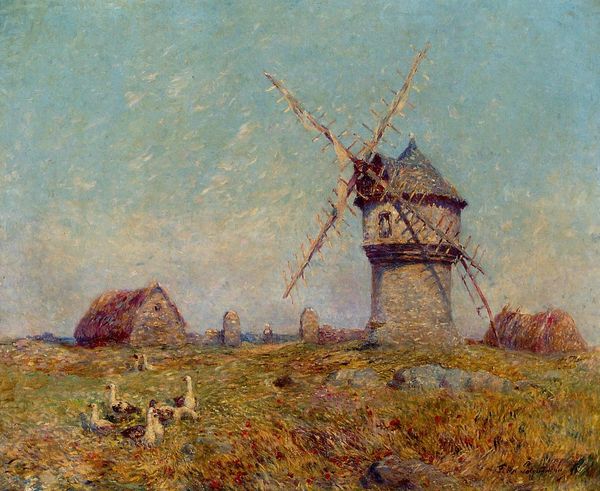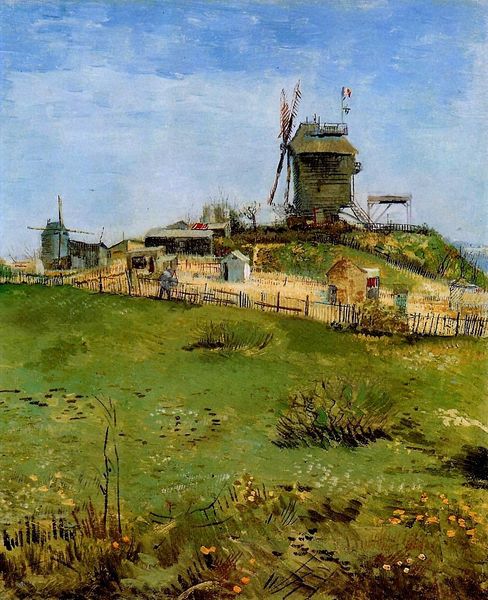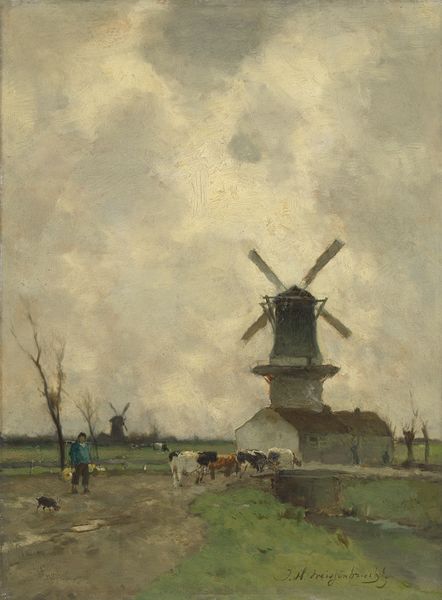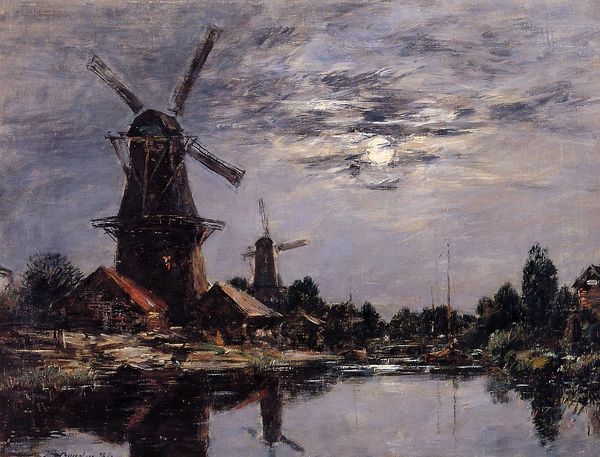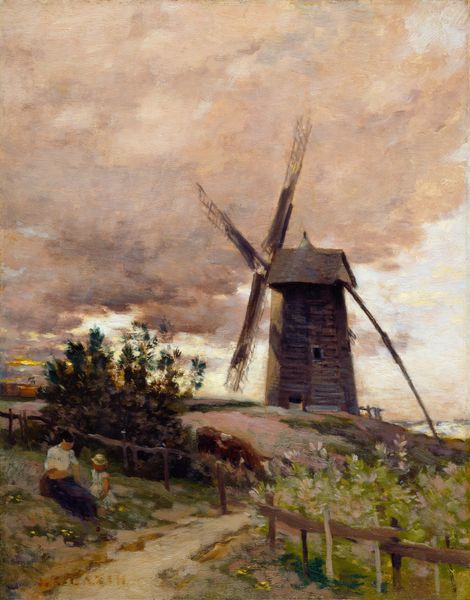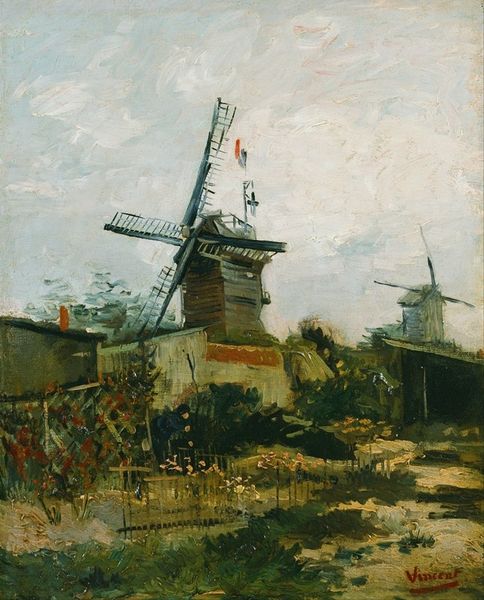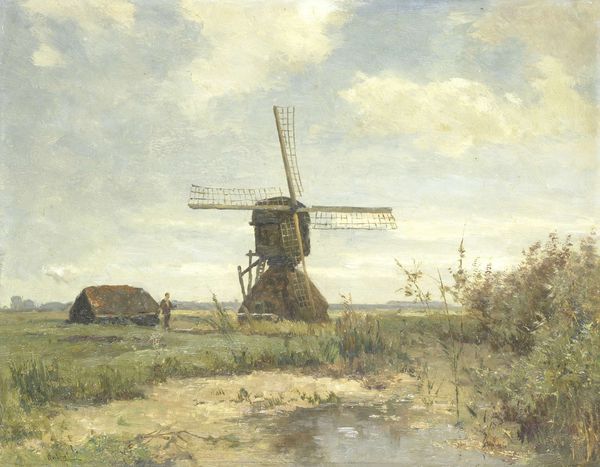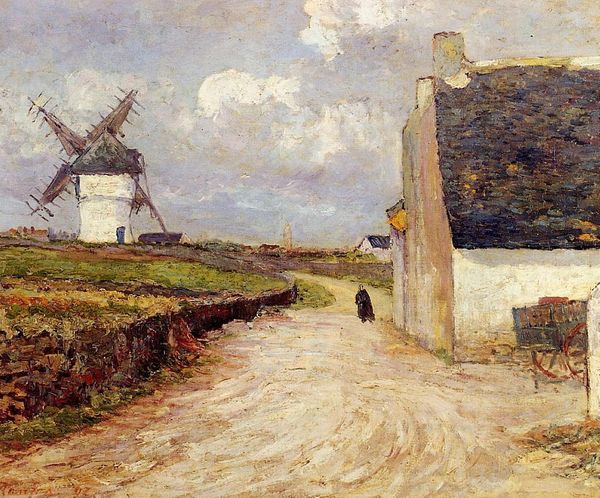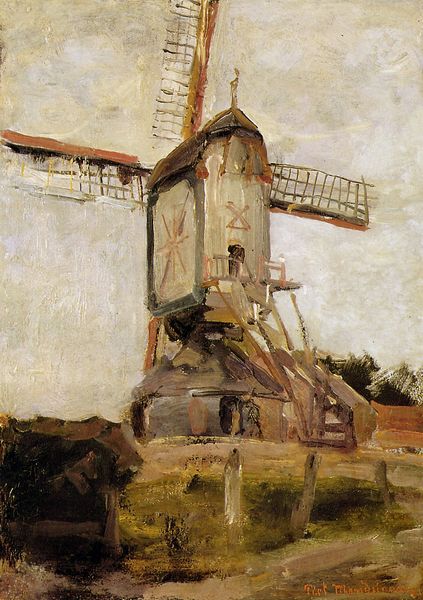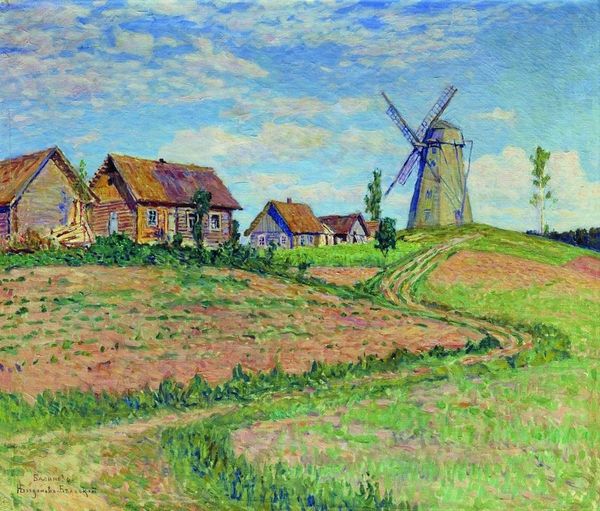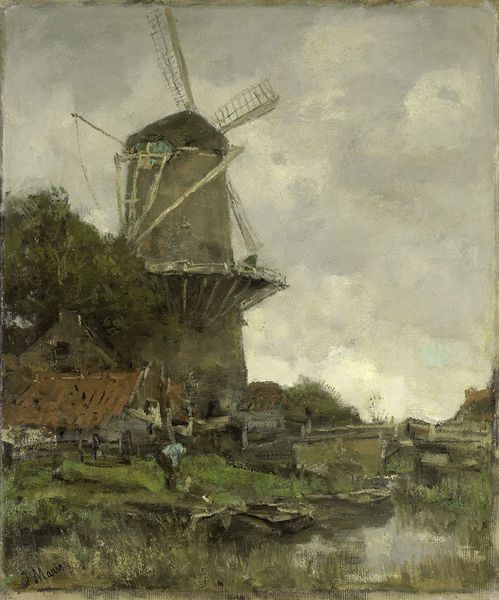
Copyright: Public domain
Curator: This is Eugène Boudin's "Cayeux, Windmill in the Countryside, Morning" from 1890. It’s an oil painting, demonstrating his plein-air technique. Editor: It's… moody. I’m immediately drawn to the dramatic sky. It feels almost oppressive above that lone windmill. Curator: Right, and think about the windmill itself. These structures weren't just picturesque; they were central to the local economy, processing grains, facilitating trade. Boudin isn’t just painting a landscape, he's showing a workplace, part of a rural system. Editor: I see that, and I’d push that a bit, wouldn't it also suggest something about power, too? These paintings aren't just idyllic scenes; the wind and its harnessing also relates to forces—the means by which labour processes and trade occurred, but are often concealed. Curator: An interesting reading! Consider also Boudin's technique. The loose brushwork, capturing the fleeting light…this links back to material concerns: how he actually applied the paint, mixing it on site. These weren't sketched from memory, so in many ways he gives us the means and location for its actual making, Editor: That sense of immediacy. What I also find intriguing, thinking about the landscape genre in general, is how the art world consumes these depictions of the countryside. We turn them into objects of display within museums. What is the experience that Boudin tried to create and the reception of that scene here? Curator: Absolutely. The commodification of rural scenes, even then, for an urban audience keen for a romanticized vision of country life… It's important to contextualize it. Editor: I think, overall, this piece reflects the intersection of human intervention with nature and our engagement of production with labour. It captures something of their complexities which we ought to respect today, no matter the site of the museum. Curator: Agreed. It gives us a point from where the changing times altered relationships within labour and landscape and their impact.
Comments
No comments
Be the first to comment and join the conversation on the ultimate creative platform.
